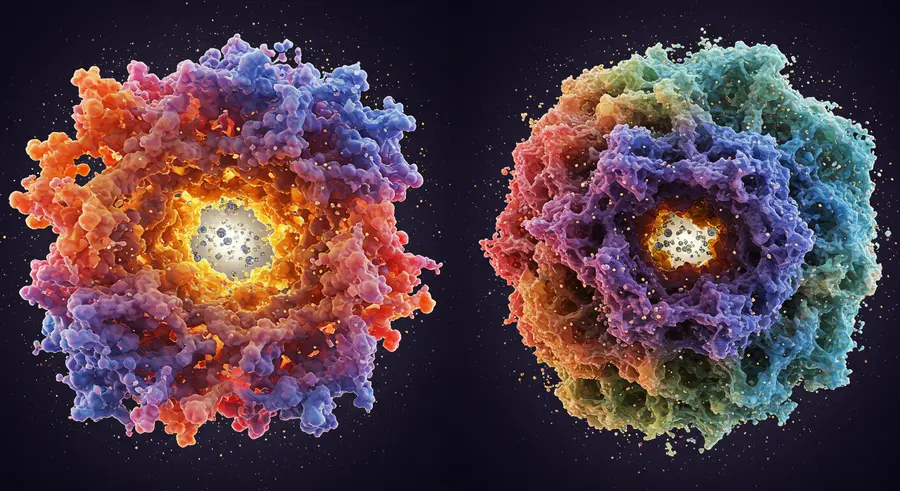Appearance

Welcome, fellow innovators and tech enthusiasts! 👋 Today, we're taking a thrilling leap into the quantum realm to explore how Quantum Computing is poised to revolutionize two critical fields: Drug Discovery and Materials Science. Forget the sci-fi movies for a moment; the future is already being built, and quantum computers are at its heart! 🚀
For a foundational understanding, you might want to check out our existing guide: Fundamentals of Quantum Computing.
Why Quantum Computing for These Fields? 🤔
Classical computers, powerful as they are, face immense challenges when simulating the intricate behaviors of molecules and atoms. Why? Because the very fabric of reality at this microscopic level is inherently quantum mechanical. Electrons exist in superposition, particles are entangled, and traditional bits simply can't capture this complexity efficiently. This is where quantum computers shine! ✨ Their ability to leverage quantum phenomena like superposition and entanglement allows them to model molecular interactions with unprecedented accuracy, unlocking possibilities previously thought impossible.
💊 Quantum Computing in Drug Discovery: A New Era of Healing
The journey from a novel compound to a life-saving drug is long, arduous, and incredibly expensive. Quantum computing promises to drastically accelerate this process, leading to faster, more effective, and personalized medicines.
Here’s how quantum computing is making a difference:
Molecular Simulation & Docking:
- The Challenge: Simulating how a drug molecule interacts with proteins or enzymes (known as "molecular docking") is crucial for predicting its efficacy and side effects. Classical computers struggle with the sheer number of possible configurations and quantum mechanical interactions.
- The Quantum Solution: Quantum computers can simulate complex molecular structures and their interactions with far greater precision. This means we can accurately predict how a potential drug will bind to a target, leading to the discovery of more potent and selective therapeutic compounds.
- Real-world Impact: Imagine designing drugs specifically tailored to a patient's genetic makeup, minimizing side effects and maximizing treatment effectiveness. This could revolutionize personalized medicine and precision oncology. 🧬
Protein Folding:
- The Challenge: Proteins are the workhorses of our cells, and their 3D shape (how they "fold") determines their function. Predicting this folding from an amino acid sequence is one of biology's grand challenges, often called the "protein folding problem." There are an astronomical number of possible folding configurations.
- The Quantum Solution: Quantum algorithms can explore these vast conformational landscapes much more efficiently, identifying stable protein structures.
- Real-world Impact: Understanding protein folding is key to developing treatments for diseases like Alzheimer's, Parkinson's, and cystic fibrosis, where misfolded proteins play a central role. 🧠
Quantum Machine Learning for Drug Design:
- The Challenge: Traditional AI and machine learning models in drug discovery are limited by classical computational power, especially when dealing with quantum chemical data.
- The Quantum Solution: Integrating quantum algorithms with machine learning can enhance the discovery of new drug candidates by processing quantum data more effectively, identifying patterns, and predicting molecular properties.
- Real-world Impact: This synergy promises to unearth novel compounds with desired pharmacological properties, accelerating the identification of promising leads. 🧪
🌐 Quantum Computing in Materials Science: Crafting the Future
From superconductors to advanced batteries, the discovery of new materials drives technological progress. Quantum computing offers an unparalleled ability to design and understand materials from the ground up, atom by atom.
Key applications include:
Designing Novel Materials:
- The Challenge: Creating materials with specific properties (e.g., high conductivity, extreme strength, unique optical properties) often involves trial-and-error experiments because simulating their quantum mechanical behavior is computationally intensive for classical machines.
- The Quantum Solution: Quantum computers can simulate the electronic structure and interactions within materials with high fidelity. This allows researchers to predict and design materials with desired properties before even synthesizing them.
- Real-world Impact: This could lead to breakthroughs in:
- High-temperature Superconductors: Materials that conduct electricity with zero resistance at room temperature, revolutionizing energy transmission and storage. ⚡
- Efficient Solar Cells: Designing new materials that absorb sunlight more effectively, boosting renewable energy sources. ☀️
- Advanced Batteries: Developing lighter, more powerful, and faster-charging batteries for electric vehicles and portable electronics. 🔋
Catalyst Optimization:
- The Challenge: Catalysts are substances that speed up chemical reactions without being consumed. Optimizing their design is crucial for industrial processes, from manufacturing plastics to producing fertilizers. This involves understanding complex chemical reaction mechanisms at a quantum level.
- The Quantum Solution: Quantum simulations can precisely model catalytic reactions, revealing optimal catalyst structures and reaction pathways.
- Real-world Impact: This can lead to more efficient and environmentally friendly industrial processes, reducing waste and energy consumption. For example, quantum computing could help optimize the Haber-Bosch process for ammonia synthesis, a process critical for fertilizer production, which currently consumes about 1-2% of the world's energy. 🌍
Quantum Sensors:
- The Challenge: Developing sensors with extreme precision for various applications, from medical diagnostics to environmental monitoring, requires understanding quantum phenomena at a deep level.
- The Quantum Solution: While not strictly "computing," quantum physics underpins the development of ultra-sensitive quantum sensors. Quantum computers can assist in designing and optimizing these sensors by simulating their quantum behavior.
- Real-world Impact: This could lead to hyper-accurate medical imaging, more precise navigation systems, and even early detection of diseases. 🔬
The Road Ahead 🛣️
While quantum computing is still in its early stages, the rapid advancements in hardware and algorithm development are truly exciting. The synergistic application of quantum power in drug discovery and materials science promises a future where we can design personalized cures and create revolutionary materials that underpin the next generation of technology.
The journey is just beginning, and the quantum era is knocking at our door. Get ready for a future powered by the incredible potential of quantum innovation! 🌟